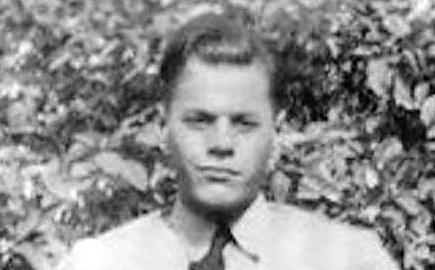This Memorial Day is bringing closure to the family of a young Army sergeant who left Arizona more than 80 years ago, dying in an infamous WWII prisoner of war camp in the Philippines.
Sgt. Cread E. Shuey was 18 in 1937 when he enlisted in the Army in Maricopa County and left for basic training — ending up five years later in bloody battles in the Philippines. He was captured and died in the Cabanatuan POW camp at age 23.
On Tuesday, May 28, Shuey’s remains, in a coffin draped with the American flag, will be flown with a military escort from Hawaii to Tucson International Airport. The flight is scheduled to arrive shortly before 11 a.m.
A half-brother, who was about 4 when he last saw Shuey in uniform, a niece and grandniece will await him — knowing he is back home to be laid to rest at the Arizona Veterans Memorial Cemetery in Marana.
A sense of happiness and peace overcomes Ray Cates about his half-brother being identified and brought to the Tucson area. Cates, of Tucson, declined an interview, but spoke through Fort Huachuca Army Sgt. Tareisha Travis, the casualty assistance officer for the family.
Fort Huachuca personnel, Tucson police officers and firefighters also will be waiting to pay tribute to Shuey.
“I consider it an absolute honor to pay our respects to Sgt. Shuey who is our hometown hero,” said Margo Susco, community engagement coordinator for the Tucson Police Department who helped organize ceremonial events.
“Mr. Shuey is a national treasure and we are grateful to be able to welcome him back home,” said Susco, adding that an honor guard will be at the airport, and Tucson police officers will escort Shuey’s coffin to Funeraria del Angel South Lawn Chapel, 5401 S. Park Ave., and the Tucson Fire Department will display the American flag on extended ladders from aerial trucks at the mortuary.
The public is invited to pay their respects to Shuey starting Tuesday from 2 to 5 p.m. at the chapel. (See attached box for services.)
Death in POW camp
Scientists in a specialized unit of the Defense Department in Hawaii identified Shuey’s remains in February using relatives’ DNA, dental and anthropological analysis and material evidence, officials said.
Shuey was born in Norton, Kansas, and moved to Arizona with his family. However, it is not known what year or where the family lived, said Travis. Military records show that Shuey entered the Army by enlisting in Maricopa County.
He served with the G Battery, 60th Coast Artillery Regiment on the island of Luzon as part of the harbor defense system for Manila Bay prior to the United States’ entry into World War II, said Travis.
Japan launched a surprise attack on the Philippines on Dec. 8, 1941, just 10 hours after the attack on Pearl Harbor.
Shuey was among the soldiers captured in April 1942.
“Some 9,000 Americans and Filipinos were held at Camp Topside before they were taken by ship to Manila and paraded in the streets to Bilibid prison,” Travis said.

Bearded, weary American soldiers who fought the epic defense of Corregidor, the Philippines, are marched away by their Japanese captors, April 1942.
“Following a short stay there, the prisoners were loaded into boxcars and taken to Cabanatuan Nueva Ecija Province, and then forced to march the final 10 miles to Cabanatuan POW camp, 60 miles north of Manila,” said Travis.
Most of the 80,000 prisoners of war captured by the Japanese were forced to undergo the infamous Bataan death march.
At Cabanatuan, “The living conditions were poor because of lack of food, supplies and medical treatment. Most of the POWs died from malnutrition and diseases, and were buried in mass graves,” said Travis.
More than 2,500 POWs died in the camp, and according to prison and historical records Shuey died Sept. 27, 1942 and was buried with other prisoners in the camp cemetery.
Identifying remains
After the war, personnel from the Army’s American Graves Registration Service exhumed those buried at the Cabanatuan cemetery, and the remains were relocated to a temporary U.S. military cemetery near Manila, Defense Department officials say.
In late 1947, the remains were exhumed again in Manila in an attempt to identify them.
However, because of extensive commingling and limited technologies, the remains that could not be identified were reburied as unknowns in the Manila American Cemetery and Memorial.
In May 2016, the secretary of the Army granted permission to exhume six graves associated with the Cabanatuan Common Grave 439. Those remains were sent to the specialized unit in Hawaii for identification, and Shuey’s remains were identified, the Department of Defense says.
Shuey’s name is recorded on the Walls of the Missing at the Manila American Cemetery and Memorial and the American Battle Monuments Commission site, along with others missing from World War II.
He was interred as an “unknown,” but his “grave was meticulously cared for over the past 70 years by the American Battle Monuments Commission. A rosette will be placed next to his name to indicate he has been accounted for,” according to the Defense Department.





